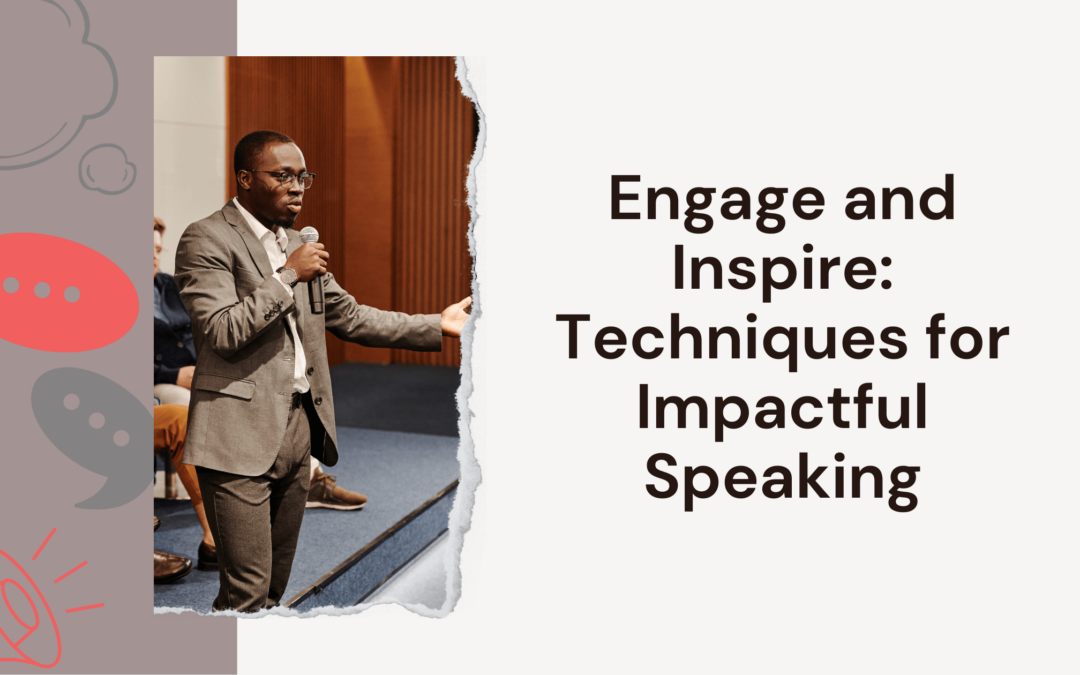
Coaching, Creative, Entrepreneurs, Self-Development
In today’s fast-paced world, it’s easy to get swept up in the expectations and pressures of society, family, and peers, often leading us down paths that may not align with our true passions, values, and aspirations. But true fulfillment comes from living a life that is authentic to who we are and what we truly desire. In this edition, we’ll explore how to determine if you’re living your dream life or someone else’s, and share practical steps to help you start living a life that’s true to you.
Signs You’re Living Someone Else’s Dream
- Lack of Fulfillment: Do you find yourself feeling unfulfilled or unsatisfied with your current circumstances, despite external success or accolades? This could be a sign that you’re living a life that doesn’t align with your true passions and desires.
- Feeling Stuck or Resentful: Do you feel stuck in a rut or resentful towards your career, relationships, or lifestyle? These feelings of frustration and discontent may indicate that you’re living according to others’ expectations rather than your own.
- Constant Comparison: Are you constantly comparing yourself to others or seeking validation and approval from external sources? This may stem from a lack of confidence in your own path and a tendency to seek validation from others.
- Ignoring Your Inner Voice: Do you find yourself ignoring or suppressing your inner voice and intuition, instead of following your heart and trusting your instincts? Tuning into your inner guidance is essential for living a life that’s true to you.
Why You May Not Be Living Your Dream Life
There are many reasons why a person may not be living their dream life, and these reasons can vary widely depending on individual circumstances and experiences. Some common factors that may prevent someone from realizing their aspirations include:
- Limited Resources: Financial constraints, lack of access to education or opportunities, and limited social or familial support can hinder a person’s ability to pursue their dreams. Economic inequality and systemic barriers may create additional challenges for individuals from marginalized or disadvantaged backgrounds.
- Fear of Failure: Fear of failure or fear of the unknown can paralyze individuals, preventing them from taking risks or stepping outside their comfort zones to pursue their dreams. The fear of not meeting expectations, disappointing others, or facing criticism can hold people back from pursuing their passions and goals.
- Self-Doubt and Low Self-Esteem: Negative self-perceptions, self-doubt, and feelings of inadequacy can undermine confidence and self-belief, making it difficult for individuals to pursue their dreams with conviction. Low self-esteem may lead to a lack of motivation, self-sabotage, or a reluctance to take initiative and assert oneself.
- Unrealistic Expectations: Unrealistic expectations about what constitutes a “dream life” or the path to achieving it can lead to feelings of disillusionment and disappointment. Comparing oneself to others or internalizing societal norms and pressures may create unrealistic standards that are difficult to meet.
- Lack of Clarity or Direction: Uncertainty about one’s passions, interests, or long-term goals can make it challenging to define and pursue a dream life. Without a clear sense of purpose or direction, individuals may feel lost, indecisive, or overwhelmed by the multitude of options available to them.
- External Pressures and Responsibilities: External pressures, such as family obligations, societal expectations, or professional demands, can detract from a person’s ability to prioritize their own dreams and aspirations. Balancing competing responsibilities and commitments may require sacrifices that limit opportunities for personal growth and fulfillment.
- Past Trauma or Negative Experiences: Past traumas, setbacks, or negative experiences can create emotional barriers and psychological obstacles that hinder personal development and achievement. Unresolved trauma or fear of repeating past failures may prevent individuals from taking proactive steps toward their dreams.
- Lack of Supportive Environment: Surrounding oneself with unsupportive or negative influences, such as toxic relationships or unsupportive social networks, can undermine confidence and motivation. A lack of encouragement, validation, or role models may diminish belief in one’s ability to pursue and achieve their dreams.
- Procrastination and Perfectionism: Procrastination, perfectionism, and a tendency to overanalyze or overthink decisions can delay progress and prevent individuals from taking action toward their goals. Waiting for the “perfect” moment or outcome may result in missed opportunities and unfulfilled potential.
Addressing these barriers to living a dream life often requires self-reflection, self-awareness, and proactive steps to overcome challenges and pursue personal growth and fulfillment. Seeking support from mentors, therapists, or supportive communities can also be beneficial in navigating obstacles and realizing one’s aspirations.
Steps to Start Living Your Dream Life
- Reflect on Your Values and Passions: Take time to reflect on what truly matters to you, what brings you joy and fulfillment, and what you’re passionate about. Identify your core values and align your life choices with what’s most important to you.
- Set Authentic Goals: Set goals that are meaningful and authentic to you rather than chasing external markers of success or approval. Focus on what you truly desire and create a vision of life based on your unique dreams and aspirations.
- Take Inspired Action: Take inspired action towards your goals and dreams, even if it means stepping outside your comfort zone or challenging societal norms. Trust in your abilities and intuition, and don’t be afraid to pursue what sets your soul on fire.
- Practice Self-Compassion: Be kind to yourself throughout your journey of self-discovery and personal growth. Embrace imperfection, celebrate progress, and learn from setbacks with compassion and resilience.
- Surround Yourself with Support: Surround yourself with supportive individuals who encourage and uplift you on your journey. Seek out mentors, role models, and like-minded peers who inspire and motivate you to pursue your dreams.
- Embrace Flexibility and Adaptability: Be open to change, growth, and new opportunities as you navigate your path towards living your dream life. Stay flexible and adaptable in the face of challenges and setbacks, and trust that every experience is a valuable lesson in your journey.
Remember, living your dream life is not a destination but a journey—a journey of self-discovery, growth, and transformation that unfolds one step at a time. By tuning into your inner wisdom, aligning with your true passions and values, and taking inspired action towards your dreams, you can create a life that’s authentic, fulfilling, and uniquely yours.

At Home, Coaching, Self-Development
Financial health refers to the overall well-being and stability of an individual’s or entity’s financial situation. It encompasses various aspects of financial management, including income, expenses, savings, investments, debt management, and overall financial stability. Here are some key components of financial health:
- Income: Financial health begins with having a reliable source of income that covers essential expenses and allows for savings and investments. A stable and sufficient income provides a foundation for financial security and enables individuals to meet their financial goals.
- Budgeting and Expenses: Effective budgeting involves tracking income and expenses, prioritizing spending, and living within one’s means. Financially healthy individuals allocate their income strategically, ensuring that essential expenses are covered while also setting aside funds for savings, investments, and discretionary spending.
- Savings and Emergency Fund: Building and maintaining savings is a crucial aspect of financial health. Having an emergency fund to cover unexpected expenses, such as medical bills or car repairs, can prevent financial stress and avoid the need to rely on high-interest debt in times of crisis.
- Debt Management: Managing debt responsibly is essential for financial health. This involves understanding and minimizing debt obligations, making timely payments, and avoiding excessive debt accumulation. Strategies such as debt consolidation, refinancing, and prioritizing high-interest debt can help individuals regain control of their finances.
- Investments and Retirement Planning: Investing for the future is integral to long-term financial health. This includes saving for retirement through employer-sponsored plans like 401(k)s or individual retirement accounts (IRAs), as well as investing in diversified portfolios of stocks, bonds, and other assets to build wealth over time.
- Financial Literacy and Education: Financial health is supported by knowledge and understanding of personal finance concepts and principles. Financially literate individuals make informed decisions about budgeting, saving, investing, and managing debt, empowering them to achieve their financial goals and navigate complex financial environments.
- Insurance Coverage: Protecting against financial risks is an important aspect of financial health. Having adequate insurance coverage for health, property, life, disability, and other potential risks can provide peace of mind and safeguard against significant financial losses in the event of unforeseen circumstances.
Overall, financial health is about achieving a balance between income and expenses, managing resources effectively, planning for the future, and being prepared for financial challenges. It involves adopting responsible financial habits, making informed decisions, and taking proactive steps to build and maintain financial well-being over the long term.
Why Financial Health Matters
Financial health is not just about having a large bank account—it’s about having the knowledge, resources, and confidence to make informed decisions about your money and secure your financial future. Here’s why it’s important:
- Peace of Mind: Achieving financial stability and security provides peace of mind, reducing stress and anxiety about money and allowing you to focus on what matters most in life.
- Freedom and Flexibility: Financial wellness gives you the freedom and flexibility to pursue your passions, goals, and dreams without being constrained by financial limitations.
- Ability to Weather Emergencies: Having a financial cushion allows you to weather unexpected emergencies or setbacks, such as job loss, medical expenses, or natural disasters, without going into debt or financial crisis.
- Opportunities for Growth: Building wealth through saving and investing opens up opportunities for personal and professional growth, whether it’s starting a business, buying a home, or pursuing higher education.
- Legacy Building: Achieving financial health allows you to leave a lasting legacy for future generations, whether it’s through charitable giving, supporting loved ones, or creating generational wealth.
Ways to Save Money
- Create a Budget: Start by tracking your income and expenses to create a budget that aligns with your financial goals. Set aside a portion of your income for savings and prioritize essential expenses over non-essentials.
- Automate Savings: Set up automatic transfers from your checking account to your savings account each month to ensure consistent saving habits. Consider opening a high-yield savings account to maximize your savings potential.
- Reduce Expenses: Look for opportunities to cut unnecessary expenses, such as dining out less frequently, canceling unused subscriptions, and negotiating lower bills for services like cable, internet, and insurance.
- Shop Smart: Comparison shop for big-ticket items, use coupons and discount codes when shopping online, and take advantage of cashback and rewards programs to stretch your dollars further.
- Plan for Major Expenses: Anticipate major expenses, such as vacations, home repairs, and vehicle maintenance, and set aside funds in advance to avoid relying on credit cards or loans.
Ways to Invest Money*
- Start Early: Begin investing as soon as possible to take advantage of compound interest and maximize your long-term returns. Even small contributions can add up significantly over time.
- Diversify Your Portfolio: Spread your investments across different asset classes, such as stocks, bonds, real estate, and alternative investments — such as cryptocurrency and NFTs, to reduce risk and increase potential returns.
- Consider Retirement Accounts: Take advantage of employer-sponsored retirement plans, such as 401(k) or 403(b) plans, and individual retirement accounts (IRAs) to save for retirement with tax advantages.
- Educate Yourself: Take the time to educate yourself about different investment options, strategies, and market trends. Consider working with a financial advisor to develop a personalized investment plan tailored to your goals and risk tolerance.
- Stay the Course: Invest for the long term and resist the urge to make impulsive decisions based on short-term market fluctuations. Stick to your investment plan and stay disciplined, even during periods of market volatility.
By implementing these strategies for saving and investing, you can take control of your financial future and build a solid foundation for long-term prosperity and success.
*Disclaimer: The information provided in this newsletter is for educational and informational purposes only and should not be construed as financial advice or recommendations. We are not financial advisors, and the content presented in this newsletter is not intended to substitute for professional financial guidance.
Individuals should consult with a qualified financial advisor or planner before making any financial decisions or investments. Every individual’s financial situation is unique, and what may be suitable for one person may not be appropriate for another.
While we strive to provide accurate and up-to-date information, we make no representations or warranties of any kind, express or implied, about the completeness, accuracy, reliability, suitability, or availability of the information provided.
Readers are encouraged to conduct their own research and due diligence before implementing any strategies or making financial decisions. We disclaim any liability for any errors or omissions in the content of this newsletter or for any actions taken in reliance on the information provided herein.
Investing and saving involve risks, including the risk of loss of principal. Past performance is not indicative of future results. Readers should carefully consider their own financial situation, risk tolerance, and investment objectives before making any decisions.

Coaching, Entrepreneurs, Self-Development
A captivated audience is interested and engaged. They’re happy to be there, and maybe even excited about the experience. The following tips can help you become a captivating speaker who mesmerizes your audience and keeps them coming for more.
Ask Questions
One great way to generate engagement is to ask questions. People love sharing their opinions. Ask them what they think, and when they respond, praise them for their input. Saying something like, “That’s a great question,” builds rapport and keeps the audience involved. Asking questions also helps direct their interest to specific topics.
Compliment Your Audience
Compliments go a long way in making your audience feel appreciated. Simple phrases like:
– “Thank you for bringing that up, Susan.”
– “That’s a great question, Bill. I’m glad you asked it.”
– “You must be a mind reader. That’s exactly what I was going to address next.”
Make your audience feel good about the experience you offer. Whether you’re complimenting their insights or their attire when meeting them beforehand, positive reinforcement keeps people interested in what you have to say.
Announce an Unadvertised Bonus for Sticking Around
At the beginning of your speech, express genuine gratitude for everyone attending and mention a special, unadvertised bonus for those who stay until the end. Make this bonus relevant to your topic. This surprise element keeps your audience curious and engaged throughout your presentation.
Paint a Picture with Powerful Emotions
The best speakers create an emotional connection with their audience. Instead of just listing facts, focus on how those facts translate into positive experiences. Use vivid, emotional language to paint a picture. Tell stories that evoke feelings and make your points more relatable. The more emotions you can stir, the more captivated your audience will be.
Use Body Language Effectively
Non-verbal communication is just as important as what you say. Use open, confident body language to establish credibility and connect with your audience. Make eye contact, use hand gestures to emphasize points, and move around the stage to engage different parts of the audience. This helps to keep people’s attention and makes your message more compelling.
Vary Your Vocal Tone
Monotone speaking can quickly lose an audience’s interest. Vary your vocal tone to emphasize key points, show excitement, and convey emotions. Changing your pitch, speed, and volume can make your speech more dynamic and keep listeners engaged.
Practice Active Listening
During Q&A sessions or interactive parts of your presentation, practice active listening. Show that you are fully engaged with what your audience members are saying. Nod, make affirming sounds, and respond thoughtfully. This demonstrates respect and appreciation for their input, fostering a stronger connection.
Include Visual Aids
Visual aids like slides, videos, or props can enhance your presentation and keep the audience engaged. Ensure they are relevant and add value to what you are saying. Visuals can help illustrate points, break up the monotony of speaking, and cater to visual learners in your audience.
Encourage Interaction
Encourage your audience to participate through small group discussions, polls, or interactive activities. Interaction keeps people engaged and feeling like they are part of the presentation, rather than passive listeners.
Tell Personal Stories
Sharing personal stories can make your presentation more relatable and memorable. People connect with stories on an emotional level, and a well-told personal anecdote can powerfully illustrate your points.
Captivating speakers aren’t born; they’re made. By practicing these tips, you can become an enthralling speaker who holds your audience’s attention from start to finish.

Coaching, Creative, Entrepreneurs, Self-Development
It’s not uncommon for people to turn to fear as a source of motivation in pursuit of their goals and aspirations. We may set ambitious targets for ourselves, driven by the fear of failure or the desire to avoid negative consequences. While fear can propel us into action in the short term, relying on fear-based motivation has significant drawbacks that can hinder long-term success and well-being.
Understanding Fear-Based Motivation
Fear-based motivation operates on the principle of avoidance – we are driven to act by the desire to escape or mitigate potential threats, whether real or perceived. This fear may manifest as anxiety, stress, or pressure to perform, compelling us to take action out of fear of the consequences of inaction.
Common manifestations of fear-based motivation include
- Fear of Failure: The fear of failure can drive us to push ourselves harder, set ambitious goals, and strive for perfection in pursuit of success. However, this fear can also paralyze us with self-doubt, leading to procrastination, perfectionism, and avoidance of challenges.
- Fear of Rejection or Judgment: The fear of rejection or criticism from others can be a powerful motivator, driving us to seek validation and approval through our actions. However, this fear can also limit our authenticity and creativity, as we may avoid taking risks or expressing ourselves authentically for fear of disapproval.
- Fear of Missing Out (FOMO): In today’s hyperconnected world, the fear of missing out on opportunities or experiences can drive us to constantly seek validation and validation from others, leading to overcommitment, burnout, and a lack of fulfillment.
The Pitfalls of Fear-Based Motivation
While fear-based motivation may provide a temporary boost in productivity or performance, it is not sustainable in the long run and can have detrimental effects on our well-being and success:
- Burnout and Exhaustion: Constantly operating from a place of fear can lead to chronic stress, burnout, and exhaustion. The pressure to constantly perform at a high level and meet unrealistic expectations can take a toll on our physical, mental, and emotional health.
- Lack of Joy and Fulfillment: When we are driven by fear, we may lose sight of the intrinsic joy and satisfaction of pursuing our passions and interests. Instead of enjoying the process, we focus solely on the outcome, creating a sense of emptiness and dissatisfaction.
- Diminished Creativity and Innovation: Fear-based motivation can stifle creativity and innovation. We may be more focused on avoiding mistakes or negative outcomes than exploring new ideas and taking risks. This can inhibit our ability to adapt to change and seize opportunities for growth and innovation.
Moving Beyond Fear-Based Motivation
To break free from the cycle of fear-based motivation and cultivate a more sustainable and fulfilling approach to achieving our goals, consider the following strategies:
- Cultivate Self-Compassion: Practice self-compassion and kindness toward yourself, recognizing that failure and setbacks are natural parts of the learning process. Treat yourself with the same kindness and understanding you would offer to a friend facing similar challenges.
- Set Meaningful Goals: Instead of focusing solely on outcomes or external validation, set goals that are aligned with your values, passions, and interests. Pursue activities and projects that bring you joy and fulfillment, regardless of external rewards or recognition.
- Embrace Growth Mindset: Adopt a growth mindset, believing that your abilities and intelligence can be developed through effort and perseverance. Embrace challenges as opportunities for growth and learning rather than threats to be avoided.
- Practice Mindfulness: Cultivate mindfulness and present-moment awareness to help you stay grounded in the here and now. Notice when fear-based thoughts arise and gently redirect your attention to the present moment, where you can take positive action toward your goals.
- Seek Support: If you find yourself struggling with fear-based motivation, don’t be afraid to seek support from friends, family, or a professional coach or therapist. Talking about your fears and challenges can help you gain perspective, identify solutions, and build resilience.
In conclusion, while fear-based motivation may provide a temporary boost in productivity, it is not sustainable in the long run and can have detrimental effects on our well-being and success. By cultivating self-compassion, setting meaningful goals, embracing a growth mindset, practicing mindfulness, and seeking support when needed, we can break free from the grip of fear and pursue our goals with courage, authenticity, and fulfillment. Remember, true success is not measured by external achievements alone but by the joy, meaning, and impact we create along the way.

Coaching, Creative, Entrepreneurs, Self-Development
Do you ever find yourself walking past the hallway of forgotten projects in your home? Perhaps it’s a stack of half-completed DIY endeavors or a collection of abandoned hobbies gathering dust in a corner. Or maybe you’ve mastered the art of stuffing unfinished projects into closets, out of sight and out of mind.
Whatever the case may be, the truth is that leaving a trail of unfinished projects can have more consequences than just cluttering up your space. In fact, this habit could impact you in several ways you might not even realize.
- Loss of Motivation: Each unfinished project represents a missed opportunity and can chip away at your motivation over time. The more projects you leave incomplete, the harder it becomes to muster the enthusiasm to start something new.
- Feelings of Guilt and Shame: Every unfinished project reminds you of your perceived failure to follow through. This can lead to feelings of guilt and shame, further dampening your motivation and self-esteem.
- Wasted Time and Resources: Unfinished projects often require an investment of time, money, and energy. These resources go to waste when left incomplete, leaving you with little to show for your efforts.
- Missed Opportunities for Growth: Completing projects provides valuable learning and personal growth opportunities. When you consistently leave things unfinished, you miss out on the chance to develop new skills, overcome challenges, and achieve your goals.
So how can you break free from the cycle of unfinished projects and regain control of your time and energy? Here are some strategies to help you get started:
- Set Realistic Goals: Be honest about what you can accomplish within a given timeframe. Set smaller, achievable goals that you can tackle one step at a time.
- Prioritize Your Projects: Not all projects are created equal. Identify the projects that align most closely with your values, interests, and long-term goals, and focus your efforts on completing them first.
- Break it Down: Large projects can feel overwhelming, making it easy to procrastinate or abandon them altogether. Break big projects into smaller, more manageable tasks and tackle them one at a time.
- Establish Accountability: Share your goals with a friend, family member, or mentor who can hold you accountable and encourage you. Accountability can help keep you motivated and focused on your objectives.
- Celebrate Progress: Acknowledge and celebrate your achievements, no matter how small. Take pride in each step forward and use it as motivation to keep moving towards your goals.
- Learn from Setbacks: It’s natural to encounter setbacks and obstacles along the way. Instead of viewing them as failures, see them as opportunities to learn and grow. Reflect on what went wrong and adjust your approach accordingly.
By adopting these strategies and making a conscious effort to finish what you start, you can break free from the cycle of unfinished projects and reclaim your sense of accomplishment and satisfaction. Remember, every completed project is a step closer to realizing your full potential and living a more fulfilling life. So why wait? Start finishing what you start today!





